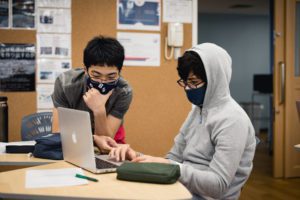
Measurements of Success in Sports & Studies
You may have seen the new Netflix documentary ‘Beckham’, about one of England’s most well-known footballers. Near the start, Beckham talks about his school days


Isidro Montes (Mr. Isi) was born in Los Angeles but grew up in a Mexican household. His parents immigrated to the USA in their mid 20s to raise a family. Being a second language learner taught him a lot about the struggles students face with cultural diversity and learning English.
I still remember the day like it was yesterday. My friend Juan and I were sitting on the carpet in our class library talking about how his dad had been saving money from his ice cream cart business to buy him a new Nintendo Entertainment System. I knew much of it was fabricated, as many of us came from poor backgrounds and neighborhoods. But hey, we were 8 years old at the time. Suddenly, our assistant teacher Ms. Conchita interrupted us. “Isidro, you are going to be on the other side from today.”
What is this “other side” you say? Well, at the time, it was how our school divided the ESL (English as Second Language) learners. At different times throughout the day, our classroom was divided by a massive grey partition, or the “Mexican border” as we would joke amongst ourselves. On one side, continuous instruction in English; On the other, instruction in Spanish.


As I got up and rounded the corner from the “border” I could see everyone on the English speaking side look at me with surprise and confusion. Sure, I knew many of them as they were part of my class but I felt a bit out of my realm. I never truly took the time to converse with these classmates as English was something I was not comfortable with. I took a seat next to a boy named Jonathan, and did my best to pay attention. As scared as I was, I felt accomplished. I had finally made the jump to “normal” instruction. For 3 years, I was part of the ESL program. Speaking nothing but Spanish and making Spanish speaking friends.
As I started to immerse myself in the language, slowly but surely my English began to improve. The opportunities to interact with the language were now plentiful and I started to make more English speaking friends. Furthermore, I started to understand the things I was really into. Garfield comics were funny now that I could read the dialogue. My favorite character from the Teenage Mutant Ninja Turtles, Raphael, was slowly becoming less likeable as I started to understand the things he said. He was kind of a jerk. Of course, my greatest accomplishment at the time was being able to recite the lyrics to my favorite song ‘Gonna Make You Sweat (Everybody Dance Now)’ by C+C Music Factory. Within a year of “crossing the border”, I was practically fluent.
From my experience as a homeroom teacher, I have observed that often students from the same cultural or language background tend to stick together. While all friendships are great, the EAL learners who stray from the norm and make multi-cultural relationships often improve their English language skills faster. They immerse themselves in the language. At an international school like OYIS, having the ability to immerse your child is a rare opportunity in Japan. Take advantage of it while you can.

You may have seen the new Netflix documentary ‘Beckham’, about one of England’s most well-known footballers. Near the start, Beckham talks about his school days

Students who are eligible for Grades 10 or 11 in August 2023 are invited to take the 2022 Scholarship Exam. This exam is the first step to potentially receiving the OYIS Achievement Award.

Osaka YMCA International School is hosting a professional learning event on Saturday, February 8, 2025. The focus of the sessions will be Rethinking Assessments, broken

Since November 2022 when ChatGPT was released to the world, it’s seemed that AI has been everywhere in the news. Since then, AI has become

Celebrating Our Teachers: 5 Educators Earn SENIA Level 1 Certification! We are excited to announce that five of our dedicated teachers have recently completed their

Being Good Enough vs Being Perfect The idea of having to achieve the highest level of perfection is something that often affects the best of
Click here to start your application
Sign in Here
Osaka YMCA International School – Copyright 2025